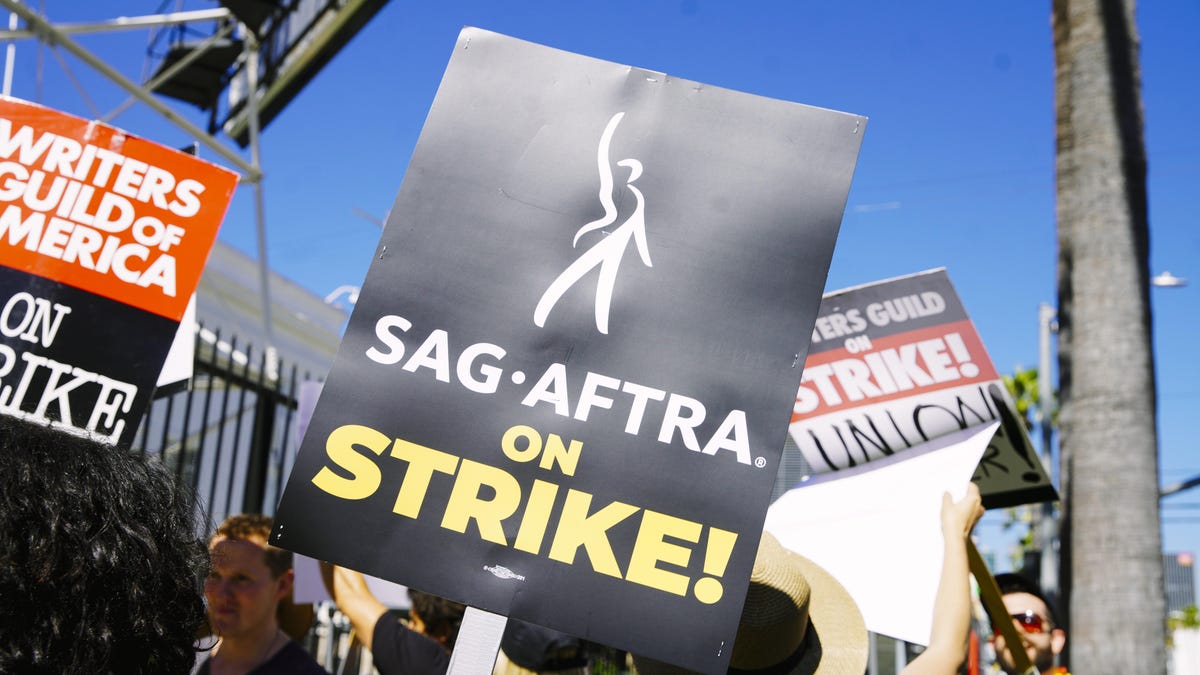
As we venture deeper into the reality of Hollywood’s current “double strike”—with actors union SAG-AFTRA joining the Writers Guild Of America on the picket lines earlier this week—it can be a bit tricky to keep track of the specific reasons writers and actors are actually picking up their signs and taking to the streets. That includes zeroing in on which demands were major sticking points in the contract negotiations that broke down on Wednesday night, when the contract between SAG-AFTRA and the Alliance of Motion Picture and Television Producers was allowed to expire.
Hence this quick rundown (informed mostly by this report from Variety) that lays out what the actors are actually asking for, including what is, per SAG-AFTRA president Fran Drescher, their number one priority in these negotiations:
Revenue sharing for streaming shows
This is the big one, apparently, and for obvious reasons: The streaming economy, which has partially disconnected the world of TV and film production from traditional advertising and the box office, has had a massively deforming impact on how actors and other professionals on projects get paid. Streaming shows don’t generate residuals, one of the oldest forms of profit-sharing for performers, drying up one of the steadiest revenue sources in the acting world.
To compensate for this change, SAG-AFTRA is pushing for streamers to offer 2 percent of the revenue that any streaming show generates to performers. Which isn’t as straightforward an ask as it might initially seem: Companies like Netflix have complicated algorithms and entire departments devoted to figuring how much money they actually get from any given new piece of content, while outside agencies have been trying to crack the problem of “streaming ratings” for about a decade at this point. The union has suggested that the studios agree to use valuations determined by third-party company Parrot Analytics—one of several firms trying to make a business out of figuring this stuff out—but apparently aren’t wedded to any one metric; the point is that some kind of revenue sharing needs to be put back in place so that the people who make very successful TV shows can actually profit off of them again. Drescher has called this issue her top priority.
Increases to salary minimums
This is one of the more traditional negotiating points in contracts like this: Increasing the minimums performers can earn on film and TV projects. Per Variety, the studios were offering the same terms they gave the Directors Guild Of America in negotiations earlier this year, boosting minimums by 5 percent in the first year of the contract, and then 4 percent and 3.5 percent in subsequent years. SAG-AFTRA says that falls far short of covering inflation, and is asking for an 11 percent increase in the first year. (SAG minimums vary based on the type of production, and currently run as low as $125 per day for low-budget “new media” projects, up to nearly $10,000 per week for a major guest star spot on an hour-long program.)
Getting consent (and money) for AI training using an actor’s likeness
And this is where things get pretty Wild West: Both sides in the negotiations apparently cede that AI is coming, studios are going to be using it, and fighting back against it entirely is probably moot. But SAG-AFTRA is pushing hard for actors to be given compensation, and be required o give consent, for any use of their likeness in training AI models.
This bit also gets a little nebulous, though, because the studios have ostensibly agreed to all of it—but SAG-AFTRA chief negotiator Duncan Crabtree-Ireland has repeatedly said the studio’s proposals have big gaps in them where shenanigans can happen. (For instance, according to Crabtree-Ireland, the studios grant they have to get your permission to train AI to recreate you—think of something like the tech used to de-age actors in recent movies—but that this agreement doesn’t automatically cover them using your performance to create “new” virtual performers.) This is going to inevitably be one of the messiest parts of whatever contract ends up being worked out, since nobody actually knows what loopholes are going to open up, but SAG-AFTRA’s basic position is that if an actors’ likeness is being used, they have to at the very least be asked permission to do so. (See also the horror stories Crabtree-Ireland has been telling about how the studios want to use the likenesses of background actors in perpetuity.)
There are other demands on the table—actors would apparently like productions to stop making them self-tape their auditions so aggressively, for instance—but these are three of the biggest sticking points. It’s especially interesting that only one of them comes down solely to money; the AI issue, and especially the attempt to impose revenue-sharing on streaming productions, are going to encompass huge swathes of the issues that have cropped up in the industry over the last 20 years, and are going to probably get pretty bloody before they get resolved.












